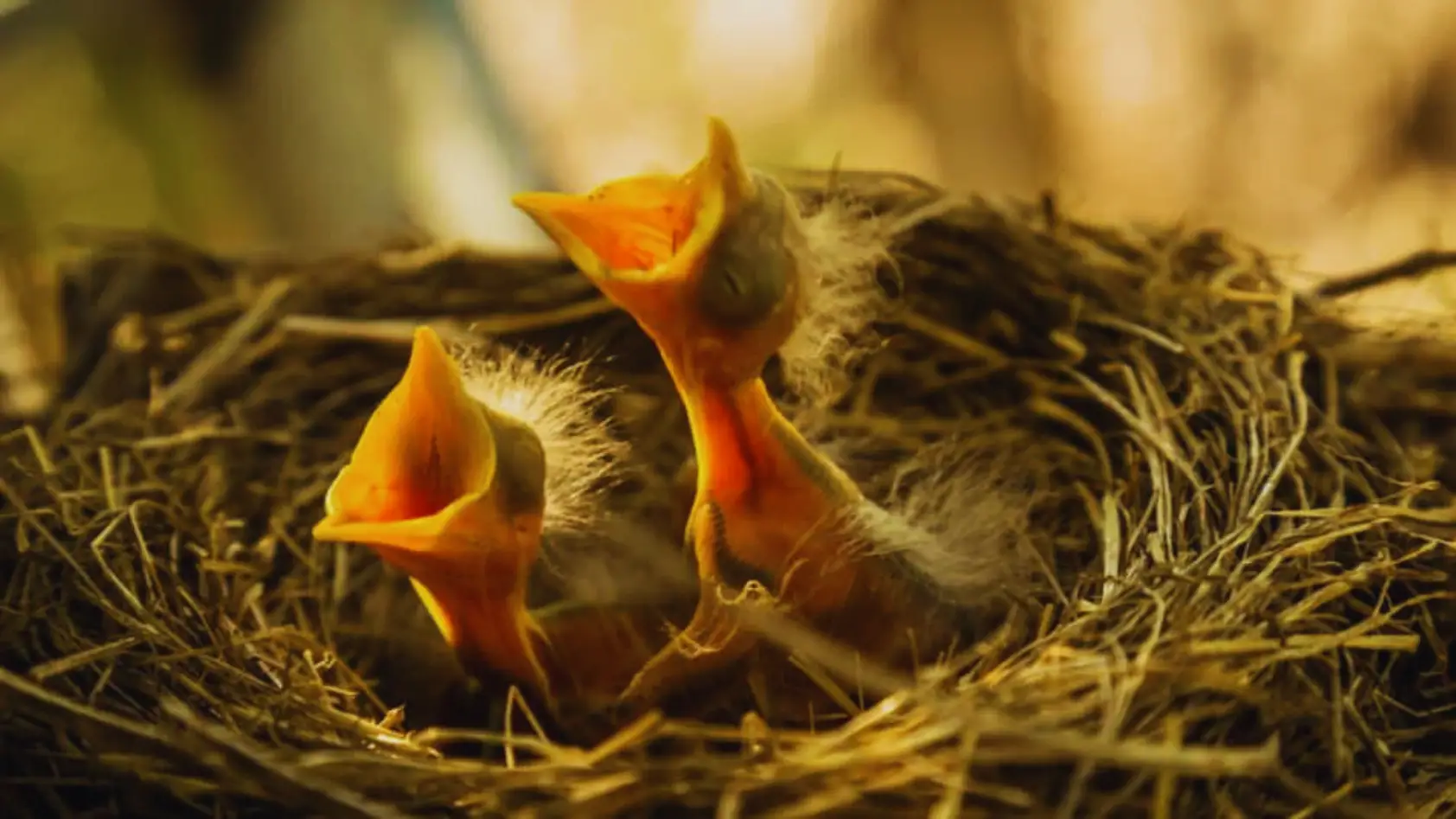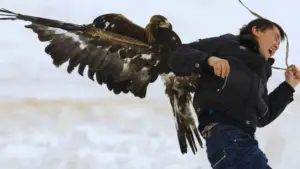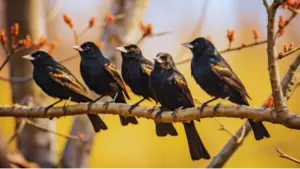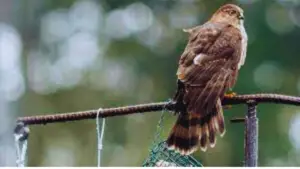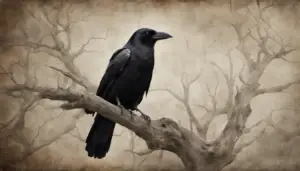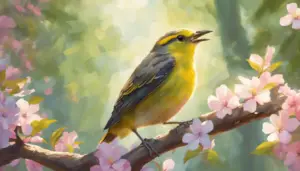Imagine yourself in a serene garden with the sound of chirping birds all around you. As you glance around, your attention is drawn to a small nest nestled among the branches of a tree.
Inside this cozy abode, a family of baby robins is growing and flourishing. These precious younglings, with their fluffy feathers and wide-eyed curiosity, are a true delight to behold.
In this article, we will take you on a journey through the fascinating life cycle of baby robins. From the intricacies of their nesting habits to the challenges they face as they grow, we will explore the world of these red-breasted birds.
Join us as we uncover the secrets of their development, their place in the ecosystem, and the efforts being made to preserve their population.
Get ready to be captivated by the adorable and awe-inspiring world of baby robins.
Key Takeaways
- Baby robins go through a fascinating life cycle, from being hatched from blue eggs to developing robust feathers and red breasts.
- The nesting habits and habitat of baby robins are carefully chosen for protection and safety, with nests built by the female robin and assistance from the male robin.
- Baby robins have a unique appearance with delicate, speckled bodies and large eyes, and they rely heavily on their parents for care and protection.
- Baby robins play a vital role in the ecosystem, controlling insect populations, assisting in seed dispersal, and establishing territories through their song.
The Life Cycle of Baby Robins
Let’s take a peek into the fascinating life cycle of baby robins and be amazed by their journey from fragile eggs to adorable fledglings!
It all begins when the female robin carefully selects a spot to build her nest, usually in a tree or shrub. She then lays a clutch of beautiful blue eggs, usually numbering three to five. The mother robin incubates the eggs for about two weeks, keeping them warm and safe from harm.
Once the eggs hatch, tiny and naked baby robins emerge. These helpless creatures rely completely on their parents for food and protection. The parents tirelessly feed them a diet of insects, worms, and berries, providing them with the nutrients they need to grow strong.
As the days go by, the baby robins develop feathers and their bodies become more robust. After around two weeks, the baby robins are ready to leave the nest. This stage is known as fledging. They hop out of the nest and begin to explore their surroundings, still relying on their parents for guidance and nourishment.
As they continue to grow, their feathers become fully developed, and their red breasts start to show. Watching the life cycle of baby robins is truly a wonder. From the fragility of the eggs to the cuteness of the fledglings, these little creatures capture our hearts.
So next time you see a robin’s nest, take a moment to appreciate the incredible journey these tiny birds go through as they grow and thrive.
Nesting Habits and Habitat
Nesting in cozy shelters, these tiny creatures build their homes with delicate precision. Baby robins are born into nests crafted by their parents, who take great care in selecting the perfect location. They typically choose trees or shrubs with dense foliage, providing protection from predators and the elements. The female robin constructs the nest using grass, twigs, and mud, which she skillfully weaves together to create a sturdy structure. She then lines the nest with soft materials such as feathers and moss, ensuring a comfortable environment for her precious younglings.
The nesting habits of robins are fascinating to observe. The male robin assists in the nest-building process, bringing materials to the female and occasionally even helping with construction. This cooperative effort strengthens their bond and ensures the success of their offspring. Once the nest is complete, the female lays her eggs, usually numbering three to five, and incubates them for about two weeks. During this time, both parents take turns keeping the eggs warm and protected.
The habitat of baby robins is crucial for their survival. The dense foliage of trees and shrubs provides ample protection from predators, while also offering shade and shelter from harsh weather conditions. The parents carefully select a location that is hidden from view, making it difficult for predators to spot the nest. This ensures the safety of the vulnerable chicks, who are born blind and featherless.
In conclusion, the nesting habits and habitat of baby robins are truly remarkable. Their ability to construct intricate nests and select the perfect location for their young showcases their dedication and survival instincts. Observing these precious creatures in their cozy shelters is truly a delight.
Egg Development and Hatching
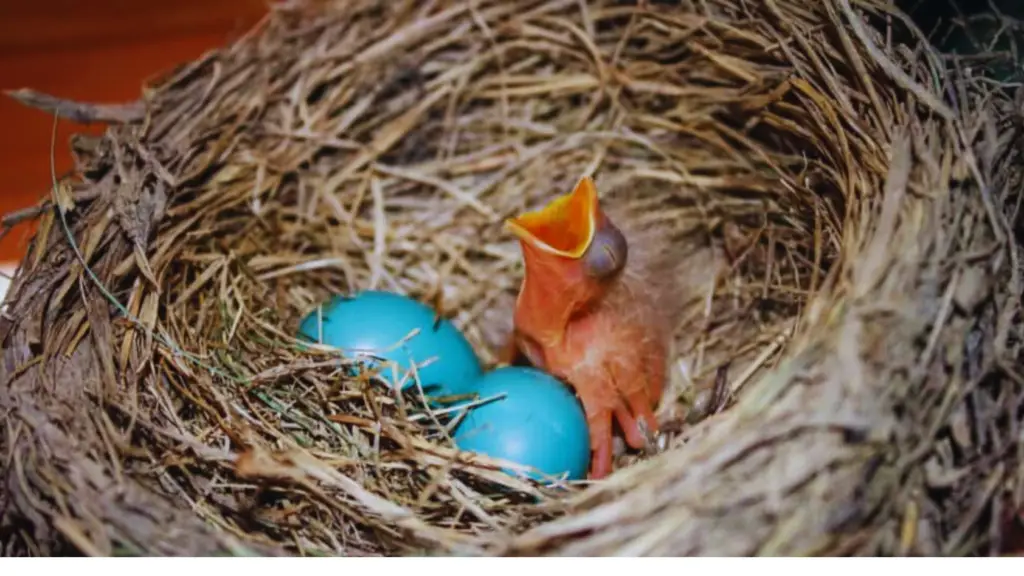
Once the nest is complete, you begin incubating your eggs, a process that lasts for about two weeks. As a female robin, you take on the responsibility of keeping your precious eggs warm and safe. You sit on the nest, using your body heat to maintain the ideal temperature for the developing embryos inside the eggs. During this time, you rarely leave the nest, except for short breaks to stretch your wings and find food. You instinctively know that the eggs need your constant care and attention.
As the days pass, you can feel the tiny lives inside the eggs growing and developing. You can hear their soft chirps from within the shells, reminding you of the miracle taking place. The anticipation builds as the time for hatching draws near.
Finally, after the two-week incubation period, you start to notice small cracks appearing on the surface of the eggs. You know that the moment you’ve been waiting for is here. One by one, the baby robins break free from their shells, revealing their downy feathers and tiny bodies. It’s an incredible sight to witness the birth of your offspring.
You continue to care for your newborns, providing them with warmth, protection, and food. Your love and dedication as a mother robin are essential for their survival. Your hard work and patience have paid off, and you can’t help but feel a sense of pride as you watch your baby robins grow and thrive.
Appearance and Features of Baby Robins
Revealing their delicate, fluffy bodies adorned with specks of brown and white, these tiny creatures emerge from their protective shells, their beady eyes blinking in awe of the world around them. Baby robins are truly a sight to behold, with their unique appearance and charming features.
- Covered in soft down feathers: As they hatch, baby robins are covered in a layer of down feathers that provide insulation and keep them warm. These feathers are incredibly soft to the touch, making them irresistible to anyone lucky enough to hold them.
- Speckled breast: One of the most distinctive features of baby robins is their speckled breast. Unlike their parents’ vibrant red chests, the baby robins’ breasts are adorned with tiny brown and white specks. This pattern helps to camouflage them in their natural surroundings, providing them with some protection from predators.
- Large eyes and wide beaks: Baby robins have disproportionately large eyes and wide beaks. Their eyes are dark and shiny, giving them an innocent and curious expression. Their beaks, although still small compared to adult robins, are perfectly designed for their feeding needs.
These adorable baby robins captivate us with their fluffy bodies and unique features. As they grow, their appearance will gradually transform, and they will become the beautiful red-breasted birds we admire in our gardens. But for now, let’s cherish these precious younglings and marvel at the wonders of nature.
Feeding and Growth
As you watch them, you’ll be amazed at how these tiny creatures grow and thrive, their appetites increasing and their bodies developing with each passing day.
Baby robins have a voracious appetite, consuming a wide variety of foods to fuel their rapid growth. Initially, they are fed a diet of regurgitated insects and worms by their parents. These protein-rich meals provide the necessary nutrients for the young robins to develop strong muscles and feathers.
As the baby robins grow older, their diet gradually expands to include a wider range of foods. They start consuming fruits, berries, and even small amphibians and reptiles. This diverse diet helps them develop a robust immune system and prepares them for their adult diet.
During this growth period, the baby robins undergo several physical changes. Their feathers transition from soft and downy to more adult-like feathers, allowing them to regulate their body temperature more effectively. Their wings also become stronger and more developed, enabling them to take their first flights.
In just a few short weeks, these once helpless hatchlings transform into independent young robins, ready to venture out into the world on their own. It’s truly a remarkable sight to witness their journey from tiny, fragile nestlings to confident, capable birds.
So, take a moment to appreciate the incredible feeding and growth process of these baby robins as they continue to flourish and thrive in the world around them.
Parental Care and Protection
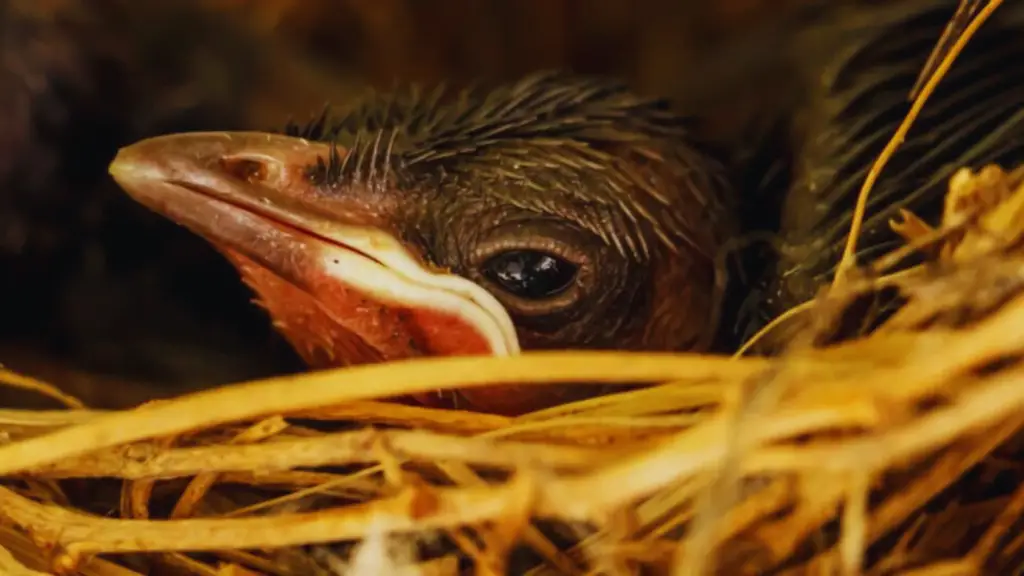
Now that you’ve learned about how baby robins are fed and grow, let’s shift our focus to the incredible parental care and protection they receive.
These red-breasted birds are not just adorable, but they are also lucky to have devoted parents who make sure they are safe and well-cared for.
From the moment the baby robins hatch, their parents are constantly by their side, keeping a watchful eye on them. The parents take turns guarding the nest, ensuring that no harm comes to their precious offspring. They use their sharp beaks and strong wings to fend off any potential threats, such as predators or humans who might unintentionally disturb the nest.
But protection doesn’t stop at the nest. As the baby robins grow older and start exploring their surroundings, their parents continue to provide guidance and protection. They teach them important survival skills, such as finding food and avoiding danger. The parents are always nearby, ready to swoop in at any sign of trouble.
Watching the dedicated parental care and protection of baby robins is truly heartwarming. It reminds us of the importance of family and the lengths parents will go to ensure the safety and well-being of their young.
Challenges Faced in the Early Days
From the moment the tiny hatchlings emerge from their cozy nest, they are faced with a world full of formidable challenges and uncertain dangers. As a baby robin, you must quickly learn to adapt and navigate through this treacherous environment.
The first challenge you encounter is finding enough food to sustain your growing body. Your parents tirelessly search for insects and worms to feed you, but it’s up to you to learn how to catch them yourself. With each failed attempt, you grow more determined and skilled.
Another challenge you face is avoiding predators. Cats, snakes, and larger birds are always on the lookout for a tasty meal, and you must constantly be on guard. Your parents teach you the importance of staying hidden and using your camouflage to blend in with your surroundings. You learn to move silently and quickly, always aware of your surroundings.
Weather conditions also pose a challenge for a young robin. Rainstorms and strong winds can make it difficult to find shelter and stay dry. Your parents show you how to huddle together with your siblings under the protection of tree branches or leaves. They teach you to fluff up your feathers to stay warm, even in the coldest of nights.
Despite these challenges, you grow stronger and more resilient with each passing day. Your determination and the unwavering love and guidance of your parents help you overcome the obstacles of the early days. As a baby robin, you are well on your way to becoming a strong and independent adult, ready to face whatever challenges life may bring.
Predators and Threats to Baby Robins
Be on high alert, as lurking in the shadows are predators eager to snatch you away from your cozy nest.
As a baby robin, you may be small and vulnerable, but you are equipped with instincts that help you navigate the dangerous world around you.
One of the biggest threats to your survival is the cunning squirrel. With their sharp claws and quick movements, they can easily climb up trees and raid your nest, gobbling up you and your siblings in no time.
Another formidable predator is the sly snake. They can slither their way into your nest undetected, swallowing you whole before you even have a chance to chirp for help.
And let’s not forget about the crafty neighborhood cat, always on the prowl for a tasty snack. They are stealthy hunters, capable of leaping up and snatching you right out of the air.
But fear not, little robin, for your parents are there to protect you. They will do their best to fend off these predators and keep you safe until you are old enough to fly away from danger.
The Importance of Robins in the Ecosystem
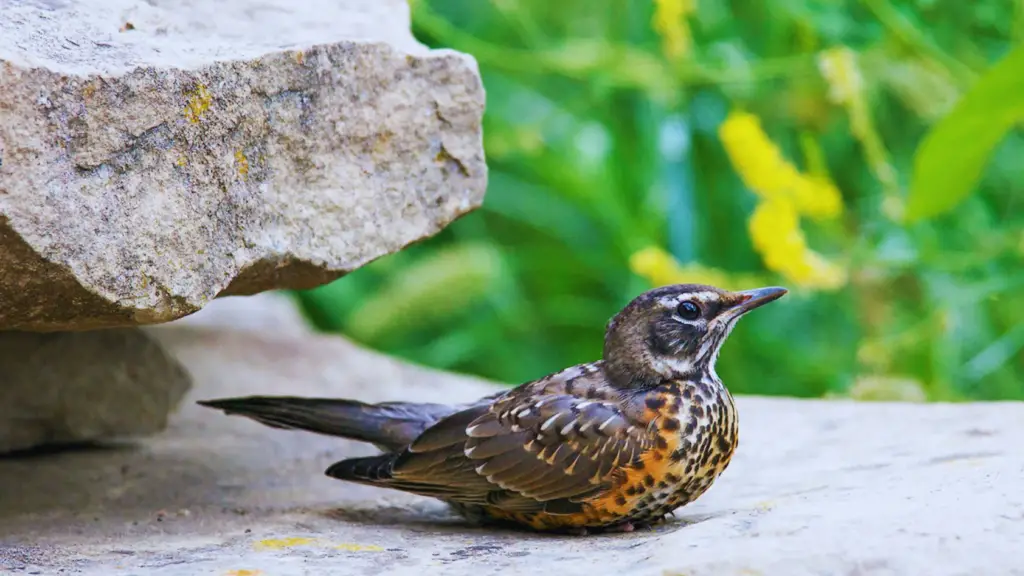
Rest assured, as you flutter about, you play a crucial role in maintaining the delicate balance of the ecosystem. You may not realize it, but your presence as a robin is of utmost importance. You see, robins are not just beautiful birds with their vibrant red breasts, they are also essential for the health and vitality of the environment.
One of the main reasons robins are so important is their diet. They have a voracious appetite for insects, worms, and other invertebrates. By feeding on these creatures, robins help control their populations, preventing them from becoming too numerous and causing harm to plants and other animals. In this way, you act as a natural pest control, keeping the ecosystem in check.
Furthermore, robins also assist in seed dispersal. When you eat fruits and berries, you help to spread their seeds to new locations. This is particularly important for the regeneration of plant species and the overall biodiversity of the ecosystem.
Lastly, your beautiful song serves a purpose beyond just serenading us humans. It helps to establish territories and attract mates, ensuring the survival of your species for generations to come.
So, as you go about your daily activities, remember that you are not just a pretty sight to behold. You are a vital player in the intricate web of life, helping to maintain the delicate balance of the ecosystem. Keep fluttering, little robin, and continue to make a difference.
The Journey to Independence
Now that you understand the importance of robins in the ecosystem, let’s dive into the fascinating journey these adorable creatures embark on to gain their independence. From the moment they hatch, baby robins are entirely dependent on their parents for survival. They rely on their parents to provide them with food, shelter, and protection. As they grow, they start to explore their surroundings, testing their wings and developing their flying skills. This stage is crucial for their development and prepares them for the next phase of their journey to independence.
The journey to independence begins when the young robins leave the nest, known as fledging. This is a significant milestone as it marks their first step towards life on their own. During this time, the baby robins continue to receive guidance and support from their parents. They learn important skills such as foraging for food and avoiding predators. Slowly but surely, they become more proficient in these tasks, gaining confidence and becoming more self-reliant.
To illustrate the stages of a baby robin’s journey to independence, here is a table outlining the milestones they achieve along the way:
| Stage | Milestone |
|---|---|
| Hatching | Completely dependent on parents |
| Nestling | Develop feathers and grow rapidly |
| Fledgling | Leave the nest and start exploring |
| Independence | Able to survive on their own |
As you observe these young robins on their journey to independence, you can’t help but admire their resilience and determination.
Conservation and Preservation Efforts
Throughout the world, people are actively working to preserve and protect the habitat of these remarkable creatures. Conservation and preservation efforts are crucial in ensuring the survival of baby robins and their future generations. Here are some ways in which individuals and organizations are making a difference:
- Creating protected areas: Many groups are establishing protected areas specifically for the red-breasted birds. These areas provide a safe space for the baby robins to thrive without the threat of human interference or habitat destruction.
- Promoting sustainable practices: Educating communities about sustainable practices is key to preserving the natural environment of baby robins. By teaching people to reduce pollution, conserve water, and minimize the use of harmful pesticides, we can create a healthier habitat for these younglings.
- Planting native vegetation: Planting native vegetation in gardens and green spaces helps attract insects, which are an essential food source for baby robins. Additionally, native plants provide suitable nesting sites and shelter for these young birds.
By actively participating in these conservation and preservation efforts, we can ensure that future generations will continue to admire the precious younglings of red-breasted birds. Together, we can make a difference in protecting their habitat and ensuring their survival.
Baby Robin Frequently Asked Questions
How long does it take for baby robins to learn to fly?
It takes baby robins around 14 days to learn to fly. So, they spread their wings and take flight like a bird out of water, leaving their nest behind to explore the world.
What is the average lifespan of a baby robin?
The average lifespan of a baby robin is around 1-3 years. They face many threats including predators, weather conditions, and human activities. Despite these challenges, some lucky robins can live up to 6 years.
What is the role of the male robin in raising the younglings?
The male robin, known as a devoted dad, diligently defends the nest, feeds the fledglings, and teaches them essential survival skills. He plays a pivotal role in raising the younglings.
How do baby robins communicate with their parents?
Baby robins communicate with their parents through vocalizations and body movements. They make high-pitched begging calls to signal hunger, and parents respond by bringing food. They also use wing flapping and head movements to communicate their needs.
Are there any specific behaviors or adaptations that help baby robins survive in their early days?
To survive in their early days, baby robins have behaviors and adaptations that help them. They have a strong instinct to beg for food, camouflaged feathers to blend in, and the ability to quickly learn from their parents.
Conclusion
As you bid farewell to these delightful darling baby robins, you can’t help but feel a sense of awe and admiration. Their journey from delicate eggs to independent flyers is a testament to their resilience.
These red-breasted wonders play a vital role in our ecosystem, their presence ensuring a balance in nature. So, cherish these precious peepers and pledge to protect and preserve their habitats.
For the future of our feathered friends and the harmony of our world, be a robin’s rightful guardian.

